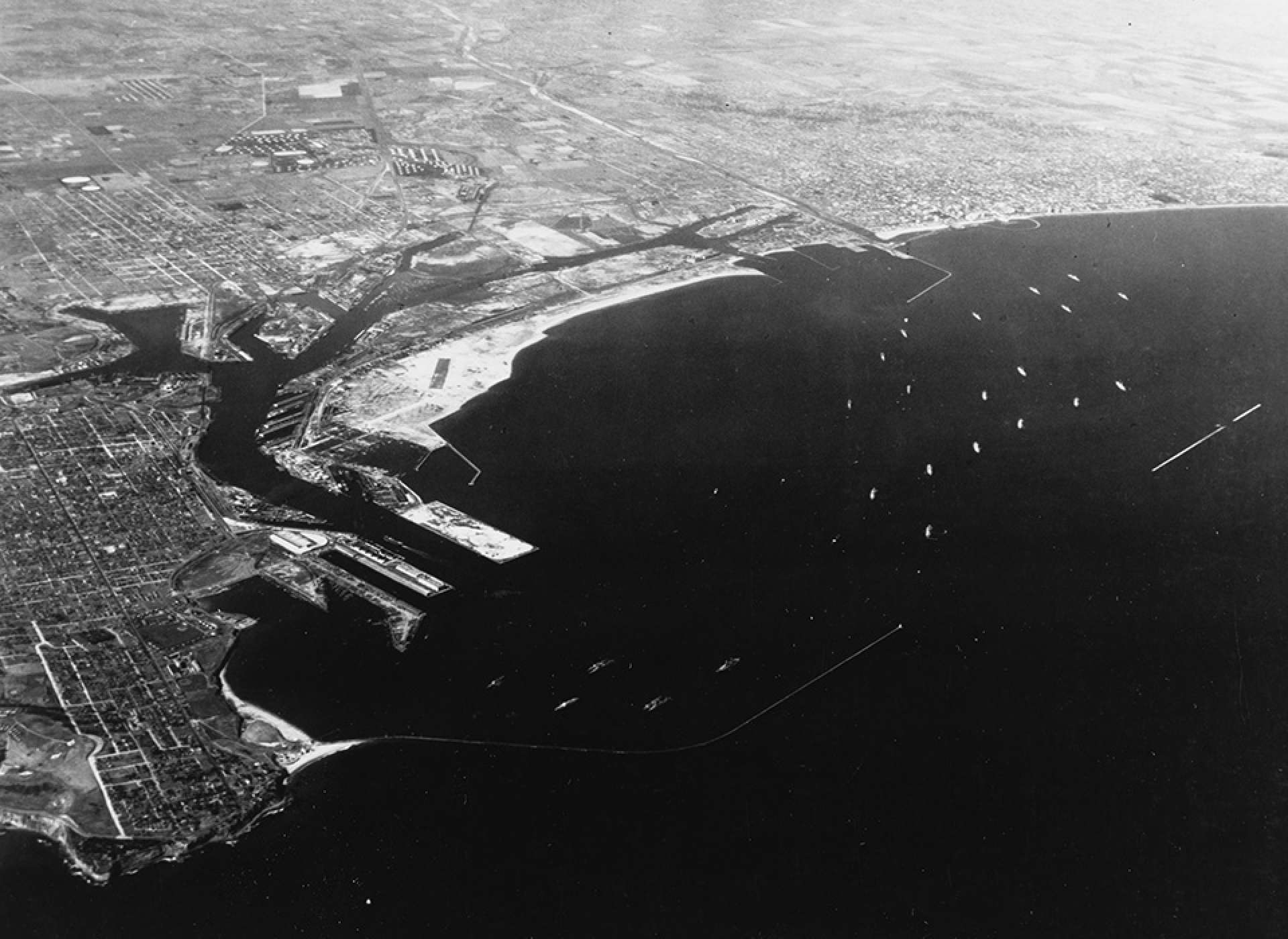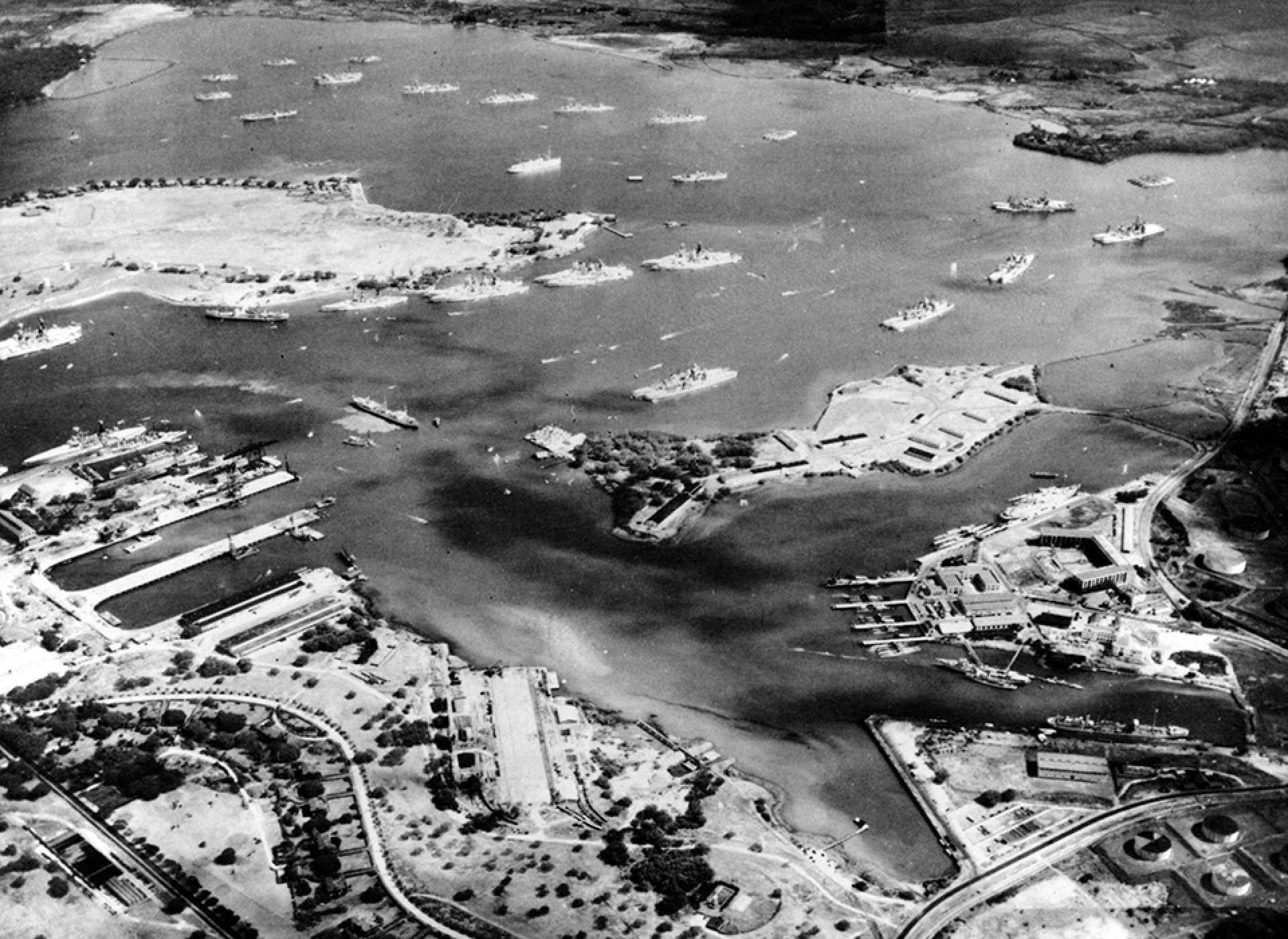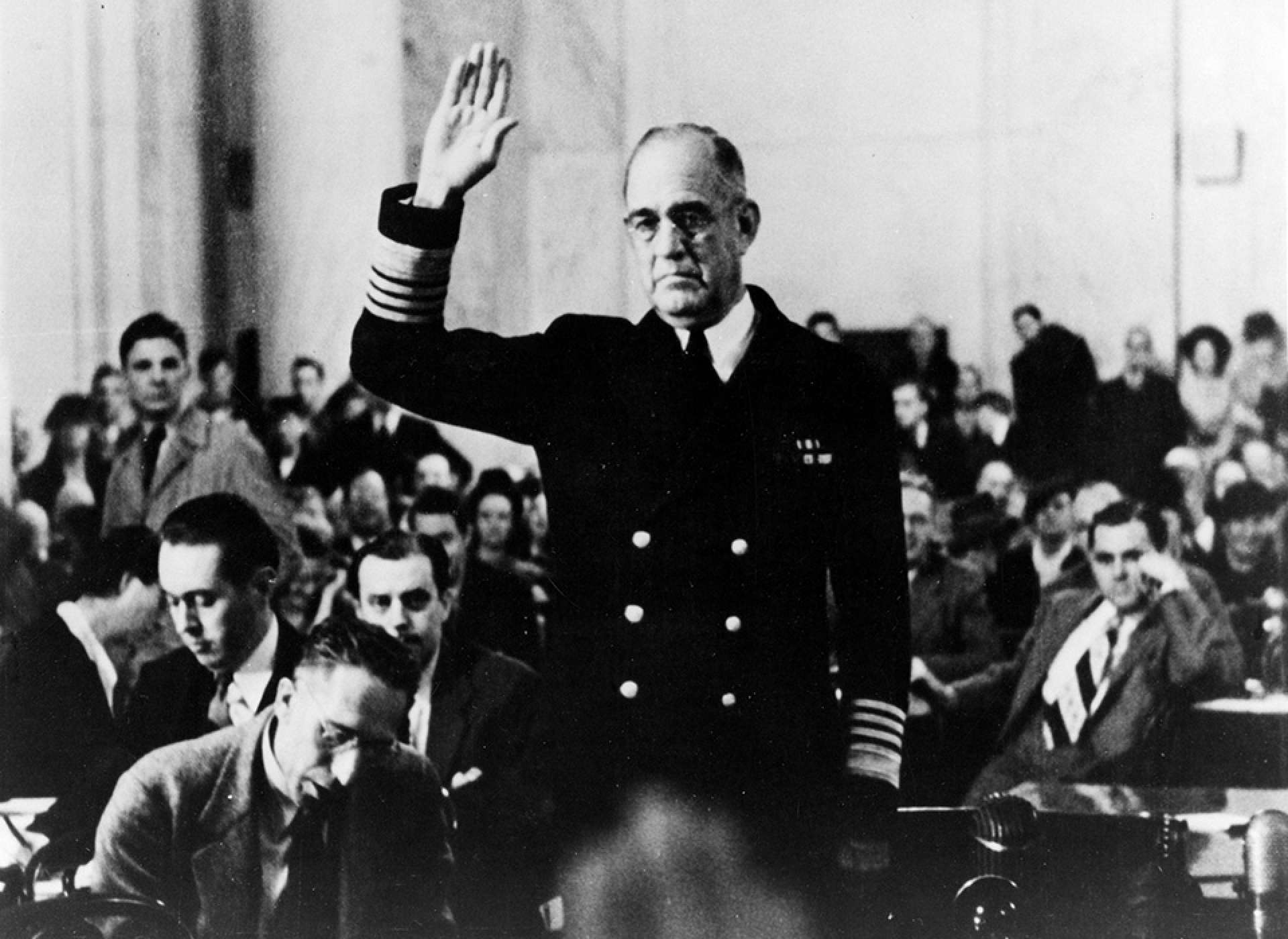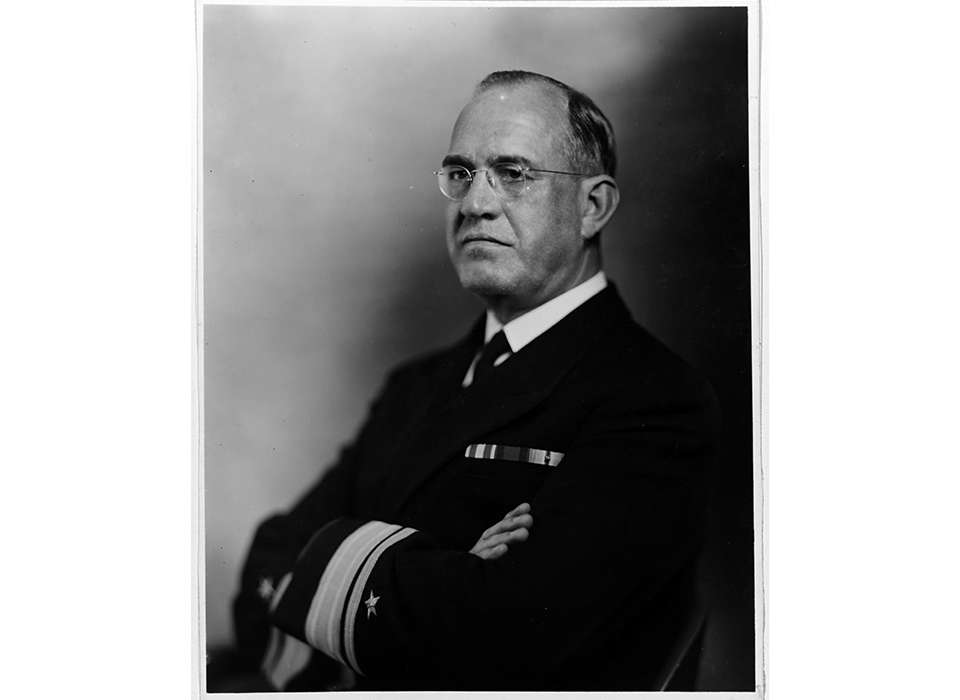Top Image: Admiral James O. Richardson, while serving as Chief of the Bureau of Navigation, 1938. Image courtesy of the US Naval History and Heritage Command.
The end of the Russo-Japanese War signaled a new era for the role of Hawaii in US naval strategy and military preparedness. Hawaii, then a US territory, was quickly considered a vital location for a US naval base from which to protect American interests in the Pacific. Work eventually began on improving the facilities at Pearl Harbor on O’ahu, but it was not until 1919 that Naval Station Pearl Harbor was a functioning base.
That same year, in response to increased Japanese naval construction and tension between Japan and the United States in the Far East, the US Navy underwent a fleet reorganization. The newest battleships, then the pride of the US Navy, were assigned to the US Battle Force in the Pacific and older ships were transitioned to the Scouting Force in the Atlantic.
The US Battle Force made its home in San Pedro, California. Located in the Los Angeles area, the port had 600—700 acres of anchorage space, and was also home to the Pacific Torpedo Flotilla. In 1917, a submarine base was established to provide coastal defense, though it closed in 1923. Over the next two decades, 16 battleships home ported in San Pedro at one time or another. Aircraft carriers eventually joined the fleet at San Pedro, along with heavy cruisers.
Although it was the home port to dozens of major ships and thousands of sailors, San Pedro did not have adequate shore facilities, but its proximity to other shipyards in California and along the West Coast helped alleviate deficiencies. In 1940, Long Beach ceded 109 acres to the Navy to build a navy yard and base on Terminal Island, creating the necessary facilities to make San Pedro a prime homeport. But it wasn’t to be.

Aerial view of Los Angeles Harbor. San Pedro is to the left, and the ships moored inside the breakwater are battleships, cruisers, and support ships. Image courtesy of the US Naval History and Heritage Command.
As the 1930s ended, things began to change for the US Navy. In June 1939, Admiral James O. Richardson became Commander, Battle Force. In September, President Franklin D. Roosevelt took steps to increase the American presence in Hawaii and ordered the creation of a Hawaiian Detachment, believing a strong naval presence there would deter Japanese aggression and provide training opportunities for the fleet. This temporary detachment consisted of two heavy cruiser divisions, two destroyer squadrons, one aircraft carrier, and supporting ships and personnel. While journalists in the United States supported the move, agreeing with FDR that it would be a deterrent to the Japanese, many naval officers, Richardson included, disagreed with the move.
Richardson believed splitting the fleet in such a manner weakened its overall ability to respond to any actual threats in the Pacific more than it could intimidate Japan. In his memoir On The Treadmill to Pearl Harbor, Richardson called it a “deleterious effect upon our naval readiness for war.” If Richardson thought the creation of a Hawaiian Detachment was a bad move, things were only going to get worse. In January 1940, Richardson became the Commander in Chief, US Fleet, the top seagoing position in the navy at the time. Facing the grave responsibility of preparing the Navy for war, Richardson understood that this was his top priority.
In April 1940, as the fleet stood out of San Pedro for exercises in the Pacific, Richardson received notice that the entirety of the Pacific-based fleet might be ordered to remain in Hawaii. In May, Richardson was given notice that he was to issue a press release stating he “requested permission to remain in Hawaiian waters to accomplish some things I wanted to do while here.” He was then told the fleet was to remain in Hawaii for “about two weeks” and would then be advised of further orders. Richardson was flabbergasted. Not only had he made no such request, he knew that the additional training the fleet needed could not be performed in Hawaiian waters, where ammunition and targets were in short supply compared to the needs of the fleet.

Pearl Harbor in 1940. Ford Island is left, towards the top. Although the facilities at Pearl were undergoing improvement, by 1940 Pearl Harbor was not yet an adequate home for the US Fleet. Image courtesy of the US Naval History and Heritage Command.
Eager to keep the fleet on schedule with training, Richardson was impatient to return to the United States. But two weeks became “for some time,” resulting in many challenges for Richardson, from personnel reassignments to vital ship maintenance and repair. Although Pearl Harbor had been improved, it was not ready to handle the entire fleet “for some time.” Fuel and ammunition shortages became a serious concern.
Richardson wrote to Chief of Naval Operations Admiral Harold Stark, cautioning him that should the fleet need to move west, “it can only start, properly prepared, from the West Coast where it can be docked, manned, stocked and stripped, and a suitable train assembled.” That letter was followed by a plea for information as to the long-term location of the fleet, reminding Stark again that the fleet could not be sufficiently prepared for war in Hawaii.
Stark replied to Richardson directly: “Why are you in the Hawaiian Area? Answer: You are there because of the deterrent effect which it is thought your presence may have on the Japs (sic) going into the East Indies.” There was still no answer to “how long?” How long stretched into November, as morale in the distant fleet declined, and Richardson was told by Stark that it had become a delicate matter and did not seem likely.
The president wanted it there, and there it would remain, despite even the War Department arguing to send the fleet back to California. Richardson repeatedly sent in requests for more support for training and concerns over fleet readiness. Reenlistments went down, crews were under supplied for the necessary gunnery training, and the presence of the fleet in Hawaii created challenges for the local population, unaccustomed to so many sailors in O’ahu at one time.

Admiral Richardson takes the oath before testifying during the Congressional investigation into the Japanese attack on Pearl Harbor. Image courtesy of the US Naval History and Heritage Command.
Despite Richardson’s direct appeals to Stark, the fleet languished in Hawaii. As the year passed, Richardson continued to raise concerns, at times directly to the president, over fleet readiness and the disadvantages of remaining in Hawaii. According to testimony Richardson gave in the Congressional investigation into the Japanese attack on Pearl Harbor, he told the president in October 1940 that in his,
“opinion, the presence of the fleet in Hawaii might influence a civilian political government, but that Japan had a military government which knew that the fleet was undermanned, unprepared for war, and had no training or auxiliary ships without which it could not undertake active operations. I further stated that we were more likely to make the Japanese feel that we meant business if a train were assembled and the fleet returned to the Pacific coast, the complements filled, the ships docked, and fully supplied with ammunition, provisions, stores, and fuel, and then stripped for war operations.”
As even Army war planners knew, the fleet’s presence in Hawaii had become a bluff, and was doing the fleet more harm than good.
In January 1941, Roosevelt prematurely relieved Richardson of command and replaced him with Admiral Husband Kimmel. The fleet remained in Pearl Harbor, where 12 months later Japanese forces attacked. Kimmel, who had long been a friend of Richardson’s, bore the burden of being in command. Richardson felt Kimmel got the “rawest of raw deals from Franklin D. Roosevelt,” though he admitted Kimmel deserved some blame for certain aspects of the “debacle” at Pearl Harbor. The blame for Pearl Harbor lay on the shoulders of many men when the Japanese called FDR’s bluff, and knowing the Navy was undersupplied and ill-prepared, took advantage of the fleet’s presence at Pearl Harbor.
Kali Martin
Kali Martin is a former Research Historian of The National WWII Museum's Jenny Craig Institute for the Study of War and Democracy.
Cite this article:
MLA Citation:
APA Citation:
Chicago Style Citation:






![Max Fuchs, New York City cantor, sings as Rabbi Sydney [sic] Lefkowitz, Richmond, VA, conducts the first Jewish services from Germany.](/sites/default/files/styles/max_650x650/public/2025-10/image1.jpg)


